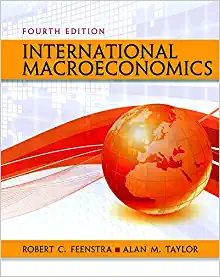Question
Suppose initially Malaysia does not trade wild-caught shrimps. The perfectly competitive price for shrimps in Malaysia is $5 per kg. Then Malaysia decides to export
Suppose initially Malaysia does not trade wild-caught shrimps. The perfectly competitive price for shrimps in Malaysia is $5 per kg. Then Malaysia decides to export wild-caught shrimps at a world price of $10 per kg.
(a) Using a diagram with demand and supply curves, illustrate the market for wild-caught shrimp in Malaysia. What is the domestic price of wild-caught shrimp in Malaysia with international trade (Hint: this is the price that the domestic consumers pay, and the price that domestic producers receive)? What is the amount exported? Who gains and who loses from international trade in the Malaysian wild-caught shrimp market?
Be sure to label your diagram carefully.
(b) Now, suppose that there is no international trade in Malaysia's market for wild-caught shrimp. The domestic demand of wild-caught shrimps could lead to depletion of shrimps in the ocean, and have a negative effect on the food chain in the ocean.
Suppose this cost created by excess fishing is $0.10 per kilogram of shrimp. In a separate diagram for the Malaysian market for wild-caught shrimp, label the equilibrium quantity in the Malaysian wild-caught shrimp as Q market. Also show the quantity of wild-caught shrimp that would minimise social cost as Q_optimum The perfectly competitive equilibrium price of one kilogram shrimp is $8. Does Qoptimum equal to the perfectly competitive equilibrium quantity? Fully explain your answer and label the area of deadweight loss (if any).
Step by Step Solution
There are 3 Steps involved in it
Step: 1

Get Instant Access to Expert-Tailored Solutions
See step-by-step solutions with expert insights and AI powered tools for academic success
Step: 2

Step: 3

Ace Your Homework with AI
Get the answers you need in no time with our AI-driven, step-by-step assistance
Get Started


